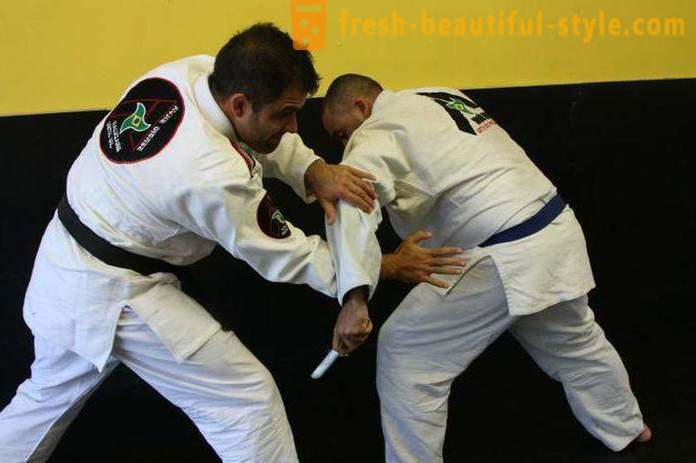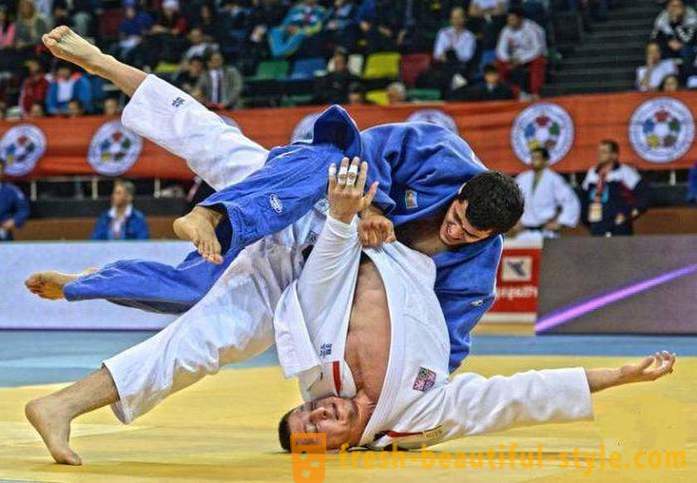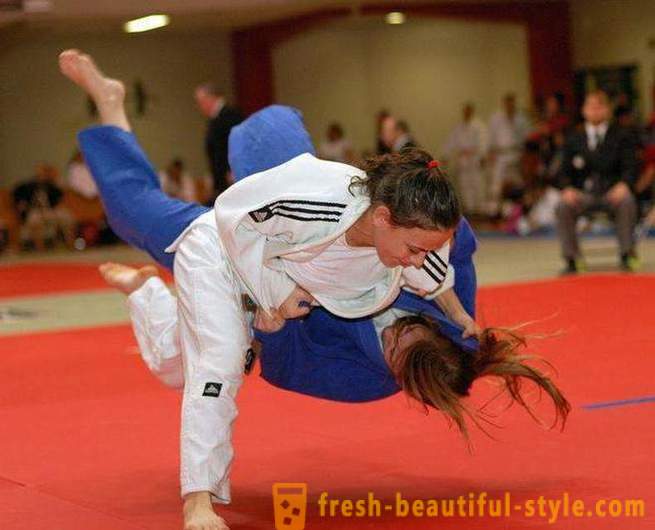Jiu-jitsu: what it is, belt, receptions, events
Just three decades ago on the territory of the former USSR, few people knew about the existence of a variety of martial arts. We know what boxing, sambo, heard that there is some kind of karate, and that's it. And if someone asked a simple layman, for example, about jiu-jitsu, what it is, and so on. E., In 99% of cases, no one would have given the answer. But by the end of the 80s of the last century began to appear the so-called video salons, which showed films with Bruce Lee, Chuck Norris, Baths Dame and other stars of martial arts. At the same time began to appear dubious quality manuals describing a dozen other methods. And on the basis of this information, young people beginning their acquaintance with martial arts.
Now everything is available a huge amount of credible information about any single combat. There are many special groups where there is a preparation of athletes both amateur and top professional.
A brief overview of popular martial arts
The most famous and popular martial arts today include the following martial arts:
- kickboxing - a mixture of classic boxing and several martial arts, the sport has a good arsenal of punches and kicks;
- capoeira - the national Brazilian martial art that combines elements of dance, acrobatics and games;
- Thai boxing - a fairly rigid contact martial art, which combines the punches, kicks, knees and elbows;
- aikido - a martial art in which the practice of taking, release of them and throws;
- Taekwondo - here punches received less attention, but there is a greater emphasis on kicking and jumping high with blows;
- karate - rather rigid form of martial arts, it equally focuses on punches and kicks.
To list all kinds of martial arts can be very long, but there is another martial art. It called it jiu-jitsu or jujitsu. Someone asks: "Jiu-Jitsu - what is it?" On this and will go on it.
What is Jiu-jitsu

The very name of this martial art in the translation sounds like "soft style". In the original, it's name is pronounced jujitsu, as the Japanese are no hissing sounds. The whole principle of this martial art is built on the fact that, in response to brute force to oppose the softness and suppleness, but when the need arises, we must be able to demonstrate and stiffness. As a result, the force will be directed in the right direction and simply destroy itself. This fighting style consists of throws, seizures, pain techniques and effects on different pressure points on the human body. Also in the present jujitsu elements and shock art.
History
Let us try to answer the question of jiu-jitsu, what it is and how it originated in the historical aspect. There are many legends about how there was a martial art. One of the most common states that he lived in the Middle Ages, a Japanese doctor Akayama Sirobey. He dedicated his life to studying the martial arts techniques, traveled extensively in China and that's when he returned to his native Japan, he developed a technique takudo organized by the school and began to teach the martial arts. But not all in this style suit Akayama, and one day he went into his garden in winter and noticed that after a heavy snowfall in many trees were broken branches, only the willow they were intact, as the snow beneath their weight just slides off them down. Here Akayama I understand what is missing in the technique developed by him. And he began to create a new style in which brute force wins softness.
Jiu-jitsu techniques, schools and styles

Now the world there are a great number of schools of jujitsu. And each has its own distinct. Somewhere emphasis on painful holds and strangulation, somewhere on the grips and throwing techniques, or on striking techniques to the impact on pressure points on the human body. It is for this reason, before each competition the most detailed manner specifies a set of rules by which they will be carried out.

The World Federation of Jiu-Jitsu conventionally identifies three main areas. This classic Japanese schools, specialized fighting styles that are designed for special services, and Brazilian Jiu-Jitsu, in which the emphasis is put on the fight on the ground.
As to the question, what in Jiu-Jitsu techniques that there are more than three hundred to describe everything you need to create a separate book. So just consider some of the nuances of the shock and pain of throwing-technique with a hall and strangulation.

Strikes in Jiu-Jitsu is not so beautiful, like karate or taekwondo, no spectacular kicks and jumping roundhouse. In this single combat efficiency in the first place, and striking technique is closest to the art of Thai boxing. It is also allowed to strike on the ground, including the elbows.
As for the impact of pain, seizures and wrinkles, here ju-jitsu is just a huge number of receptions. What can I say, if only one way to capture and impact of pain on the wrist There are 32 species. And creases finger joints of hands and feet, the impact on the spine and on the different pain points, but also a great variety of choke holds. That's really really a great way for action.
Throwing techniques of jiu-jitsu is also replete with many techniques. She had been chosen as the basis of such martial arts as sambo, aikido, martial arts and many others.
Jiu-belt and regulations on them

As with all martial arts, jiu-jitsu there are degrees of skill. And as is customary in the martial arts, they are expressed in the color zones. So, in order:
- white belt - to obtain it you need to know the basics of etiquette, special exercises, push-ups 10 times, 20 times to squat and own several elementary methods;
- a white belt with a black stripe - in addition to the same requirements that the white belt, we still have to know the rack, as well as own simple techniques from the rack and from a kneeling position;
- yellow belt - to obtain it already needed competition in Jiu-Jitsu, you must take part in at least two of any level, own technics of movement on his knees, protection, cuttings and retention;
- orange belt - you need to win at least four victories in all competitions, own technique and throws punches;
- green belt - it takes at least four wins in the last year in any event, possess additional aspects of shock technology, as well as a choke hold and hall;
- blue belt - for it takes at least 4 wins in the last year, plus the 1-2 place in the competition is not below the level of inter-club;
- brown belt - at official competitions need to borrow from the 1 st to 5 th place at the same time, winning at least two victories, as well as perform a number of requirements in technique and theory;
- Black Belt - to get it, you need to take from the 1st to the 3rd place in the official competition, winning at least 2 wins, as already need to have instructor training and by this time to conduct training sessions for at least two years ;
- red and black, red and white and red belt masters - to get in Jiu-Jitsu belt such colors, you need to show special merits and make a significant contribution to the arts.
Sports Equipment Jiu-jitsu

Those who are interested in this martial art, it is worth paying attention to the need to purchase special equipment and tools for training. Firstly, this is a special kimono jujitsu called "gi" or "dogs", consisting of pants, jackets and belts. Kimono, compared to the same for doing the same karate, different tissue density, as in addition, that it should not hamper the movements, it must withstand grabs, throws and strong spurts. In addition to the kimono, you will need a soft helmet, gloves with open fingers, cap and shell to protect the groin. Still can be useful protection to the shin. About the additional inventory, if there is a need for it, tell the coach. If kimono jiu-jitsu has not yet purchased, at first, you can train in the usual tracksuit. The main thing that it was free, durable and does not restrict movement.
Conclusion
I would add finally that in order to give details of jiu-jitsu, what it is and so on, need not write a book in one hundred pages. In this article, we have been affected by the major aspects of this amazing martial arts, existing and upgraded more than one hundred years. The reader may be interested in, want to consider this kind of detail, or even to deal with it in a professional manner. It is worth noting that this would be the perfect choice.













































